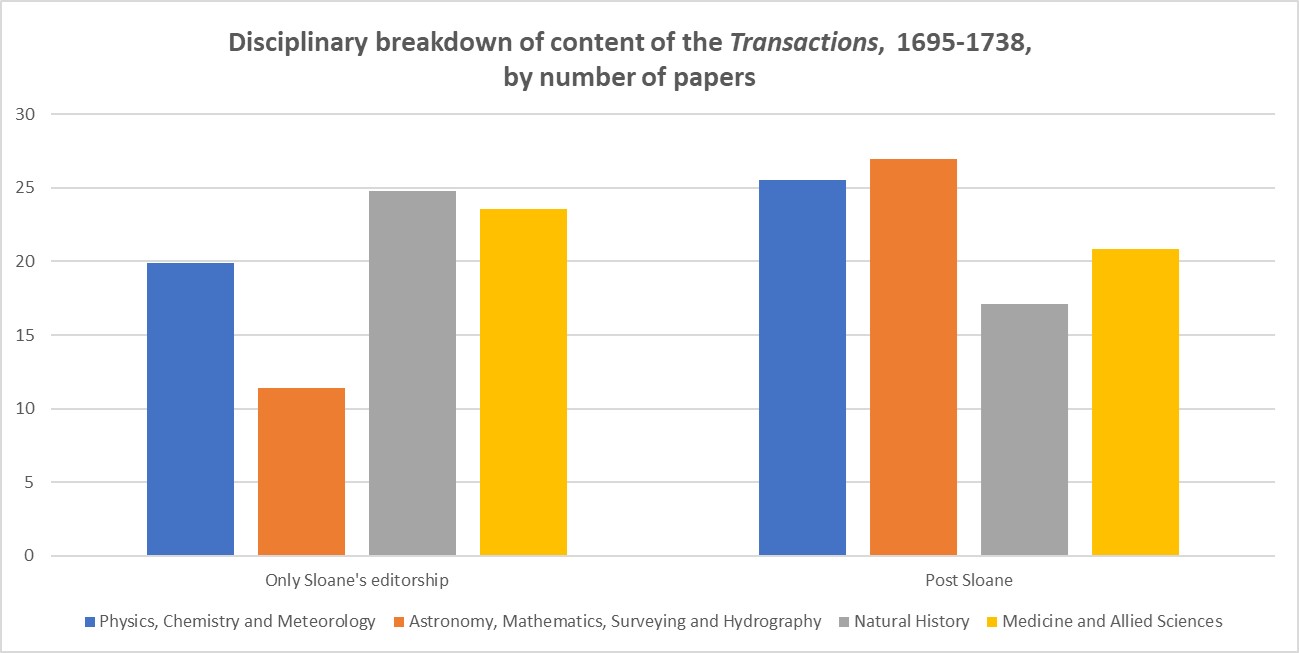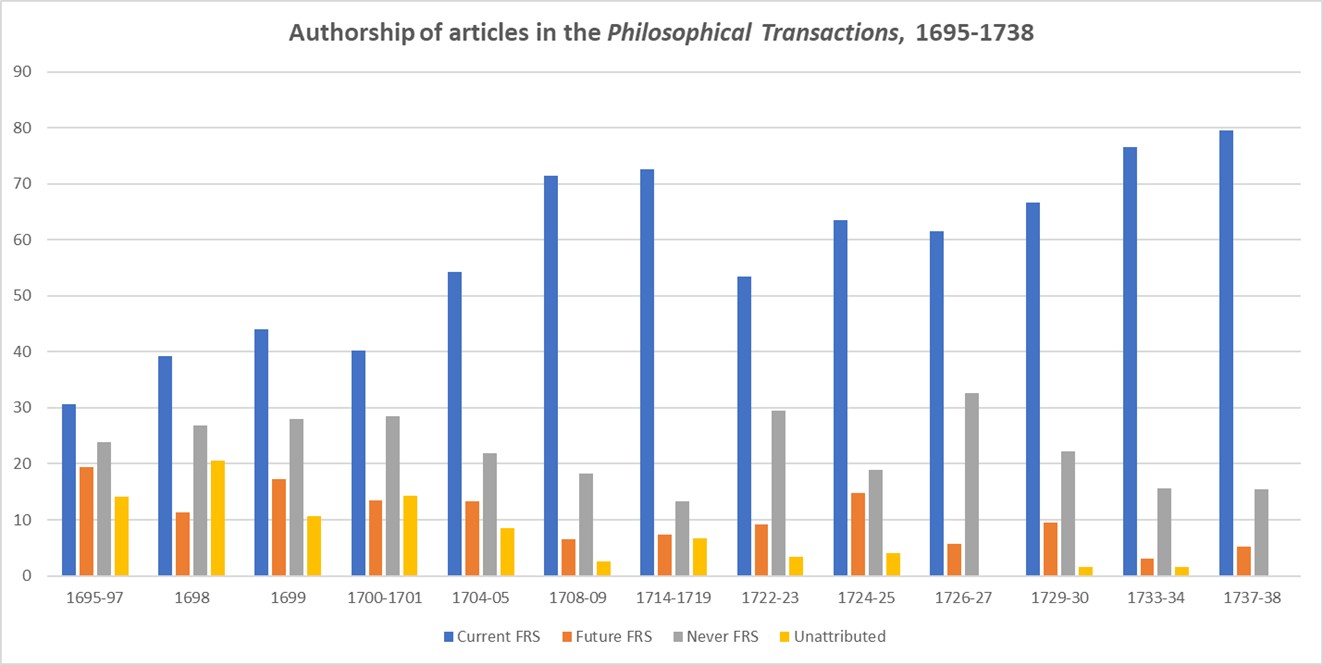How much difference does the identity of the editor make to the content of a journal? In the early eighteenth century, the answer was ‘quite a bit!’. The first editor of the Philosophical Transactions, Henry Oldenburg had died in 1677, and subsequent editors had a tendency to reinvent the periodical (consciously or not) to suit their own interests or editorial abilities. Here, we present a series of charts to illustrate how the Transactions changed under the various editorial regimes of the early eighteenth century.
The editors of the period were: Hans Sloane, c1695-1714; Edmond Halley, 1714-1720; James Jurin, 1720-1727; William Rutty, 1727-1729; and Cromwell Mortimer, 1729-51.
Source of material – from the fellowship of the Royal Society, or not?
During Sloane’s editorship, the proportion of material contributed by fellows of the Royal Society increased significantly – and this trend continued under the subsequent editors.
Source of material – British or overseas?
The Transaction was more strongly British (with less overseas material) during Halley’s editorship .
Topic of material – broad disciplinary breakdowns
 Sloane included far less material from astronomy and mathematics than did his successors
Sloane included far less material from astronomy and mathematics than did his successors
Where do the data come from?
This analysis is based on a manual count of sample volumes of the Transactions, carried out by Noah Moxham in 2019. It extends to 1738 because after that, the form/genre/remit of the Transactions had stabilised.


